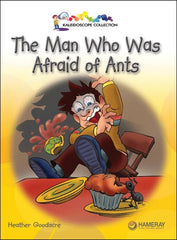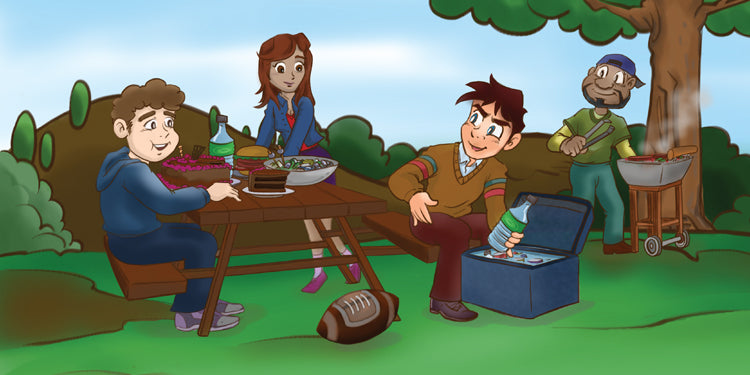
This is a guest blog post by Dr. Geraldine Haggard, who is a retired teacher, Reading Recovery teacher leader, author, and university teacher. It is the second post in a series of posts on using books for building inference skills. You can see the first post here , the second post here , and the third post here.
In this series of blog posts, I have been looking at the use of guided-reading-leveled books in the early grades to develop problem solving and inference skills in young readers. In the first two posts, we looked at how this can work in kindergarten. In the third post, we started to look at second grade, and today I will finish my thoughts about second grade with one last example of how to use a book to develop these skills. Hopefully, this series of posts and example texts have given you some ideas about how to generalize these strategies with leveled readers in your own classroom.
Today's example text, at guided reading level F, is written slightly under level for second-graders, which makes it accessible to even those students who might be struggling. However, the inference lessons are on standard level for second grade and could apply to even advanced students. Let's take a look at how we use it.
 Book Two:
The Man Who Was Afraid Of Ants
Book Two:
The Man Who Was Afraid Of Ants
The Man Who Was Afraid of Ants
by Heather Goodacre is an excellent choice for introducing unknown words, multiple-meaning words and phrases, and changes in a character. Use the front cover to introduce the character of Jake. Prompt the children as they determine the meaning of “afraid of.”
Page 2:
Ask children to discuss why Jake was a fireman.
-What clue does the author give
-Why would Jake want to 'help people'?
Page 3:
After reading this page to the class, ask them to show in actions what the words “itch,” “twitch,” and the phrase “creepy feeling” mean. As you continue to read the story, the children can use the actions for these words each time you read the words.
Pages 4 and 5:
After reading these two pages, guide and prompt the students as they use clues from the story to discuss whom the friends are, where they are, and what is about to happen.
- How did the illustrations help answer these questions?
Pages 6 and 7:
Study the illustrations and discuss what the students think is happening to Jake.
- How do you think his friends felt when they saw him act this way? (Accept any logical response.)
Page 8:
- How does the boy in the picture feel?
- What words on the page and the picture help you know how he felt?
Page 9:
Ask for one volunteer student to be Jake and another to be the boy. The two students will speak in the same manner as the two characters.
- How do they know what the boy may have said?
- If they drew a speech balloon above the boy, what might be in the balloon?
Pages 10 and 11:
- How are the two pictures different?
- Does Jake change how he feels? How do we know?
- When the students come to “itch” and “twitch,” what do they do, or not do?
- How can they show “a tiny bit creepy”?
- Do they think Jake is still afraid of ants? Why?
- What does Jake mean when he says, "I guess"?
After finishing reading the story, ask the children why they think the home of the ants is called a “farm.” What do they usually think of when they see or hear the word “farm”?
Invite the students to draw pictures of things they are afraid of. If they desire, they can write about how these thing make them feel. Ask volunteers to share their fears. The drawings could be included in a class book titled "Things We Fear" and placed in the class library.
Plenty of other books can be used in this way to model, prompt, and provide opportunities for students to infer. As your students progress to other grades, they will use this strategy, and it is part of each year's standards. It becomes an essential skill needed in all subject areas.
This concludes my series of posts on using books to teach inference skills in early grades. To go back to the first post in the series, click here . If you like what you've read here, you can see an archive of my earlier posts here ! I contribute fairly frequently, so subscribe to the blog in the upper right sidebar to get my next series of posts delivered directly to your mailbox!
~~~
Geraldine Haggard is the author of several books from our Kaleidoscope Collection . She spent 37 years in the Plano, TX school system. She currently tutors, chairs a committee that gifts books to low-income students, teaches in her church, and serves as a facilitator in a program for grieving children.
~~~
To download information sheets with key features about the Kaleidoscope Collection , which contains the book mentioned in this post, click the image below.




















































